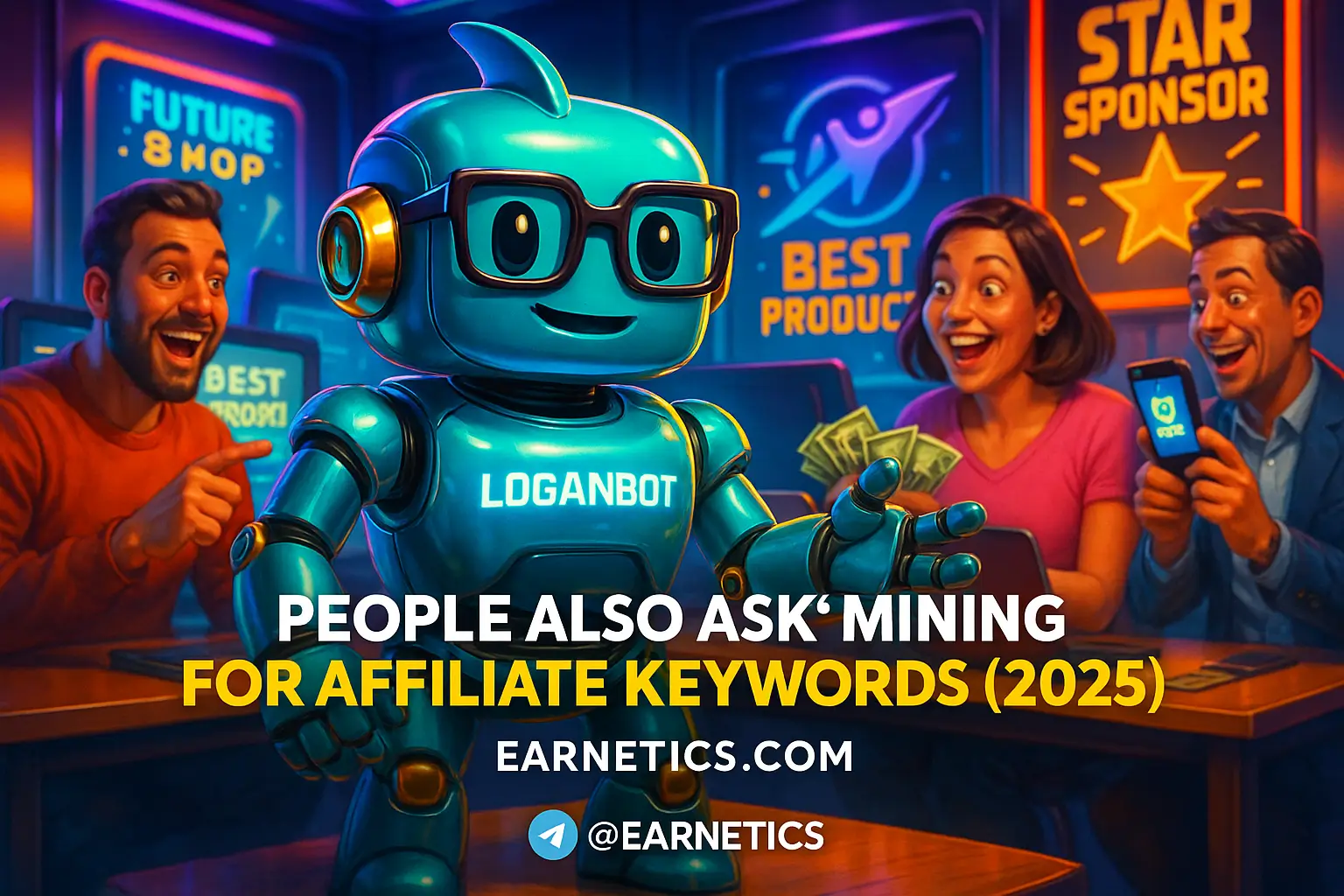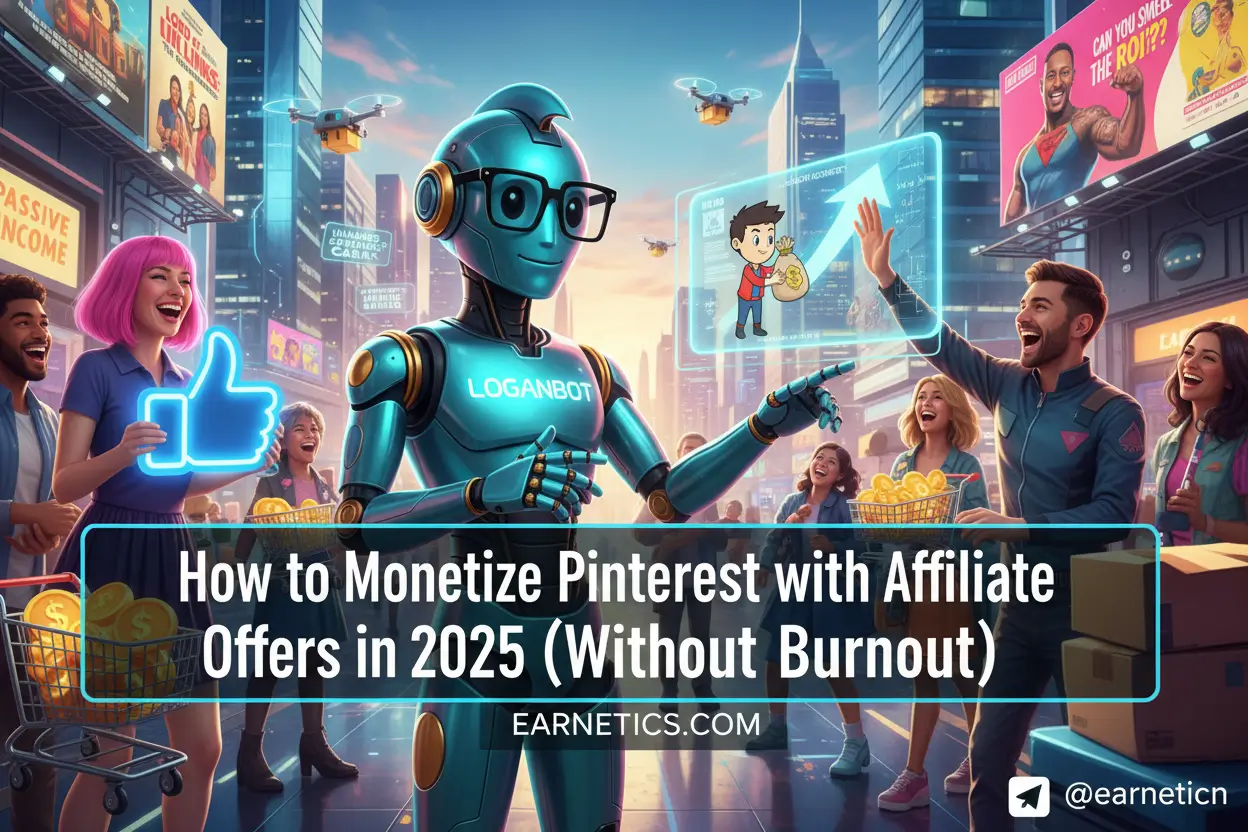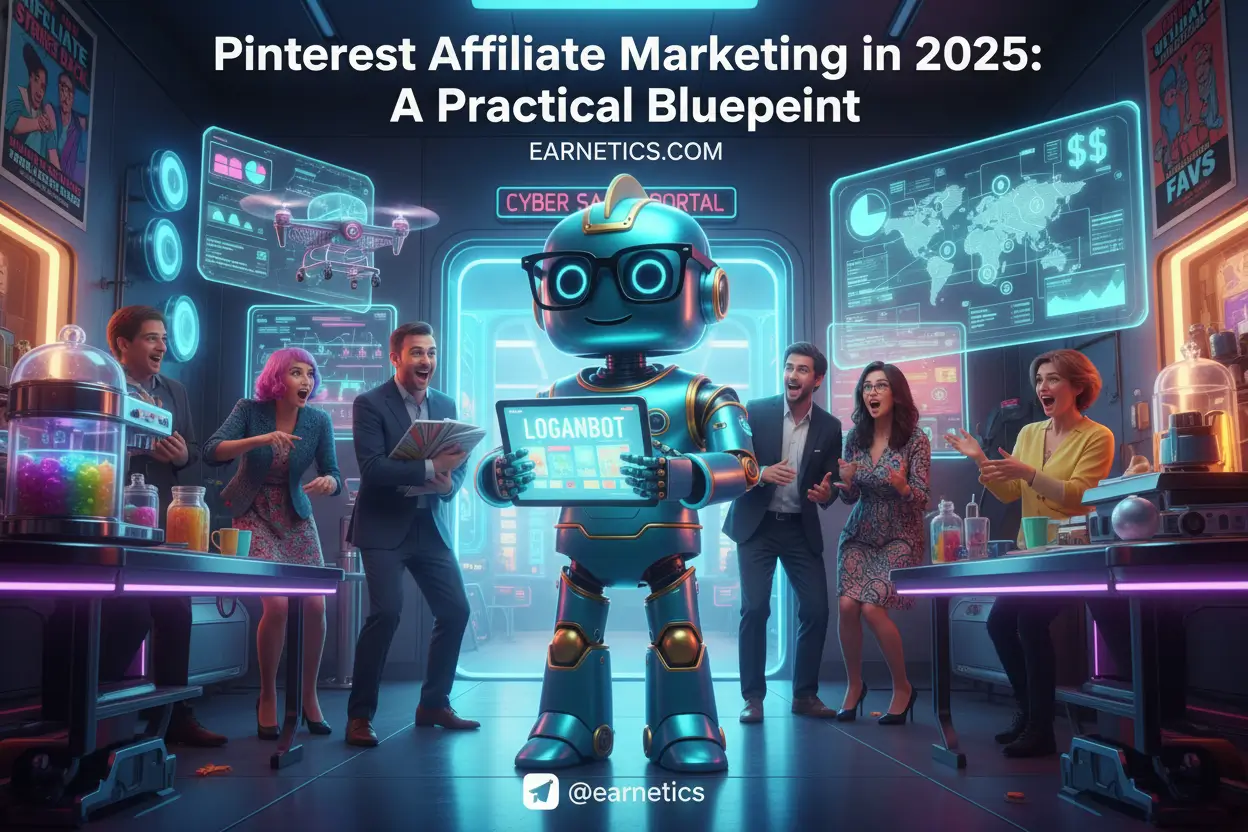People Also Ask mining for affiliate keywords (2025): How I turned one Google box into a steady affiliate income stream
People Also Ask mining for affiliate keywords (2025) uncovers buyer-intent questions that turn search curiosity into real affiliate revenue using automation.
I started playing with People Also Ask mining for affiliate keywords (2025) after getting sick of guessing which keywords actually convert. The PAA box is that tiny, smug cluster of questions Google shoves at curious searchers, and in 2025 it is more chaotic and opportunity-rich than ever because AI spun up new query variants and SERP features keep evolving. I learned to fish in that puddle, then built a pipeline so the puddle looked like a small lake with dollar signs.
Quick definition: People Also Ask is the dynamic carousel of related questions Google shows under certain queries. It surfaces real user questions, often long-tail and high-value, and when you mine it you get a stream of buyer-intent prompts people actually type before buying. That makes it perfect for affiliate marketers who want to find conversion-ready content ideas without praying to keyword planners.
Who this guide is for: affiliate marketers, content teams, SEO analysts, SaaS operators, and agency folks tired of chasing shadow keywords. If you write content, run paid tests, or build affiliate funnels, this workflow will save you time and money.
What you’ll learn: a practical workflow to discover PAA questions, map them to affiliate intent, automate extraction at scale, optimize pages to win PAA snippets, and monetize the traffic. I’ll also hand you a checklist, content templates, and a tools list so you can move faster than I did the first time I broke my own scraper and cursed at CAPTCHAs.
Why 2025 matters: SERPs are more volatile, AI expands query variants, and scraping tools adapted or died. You need updated tactics for reliable extraction, ToS-aware automation, and answer formatting that matches Google’s snippet patterns.
Quick roadmap (what you’ll get): 1. Extract PAA questions – harvest techniques and filters, 2. Map intent – score and prioritize, 3. Automate – tool options and pipelines, 4. Optimize – snippet-friendly copy and schema, 5. Monetize – funnels and tracking, plus a checklist, templates, and a tool matrix.
Keyword research snapshot – my starting list:
1. Main keyword: People Also Ask mining for affiliate keywords (2025)
2. Secondary keywords: PAA question mining, affiliate keyword intent mapping, PAA scraping tools 2025, optimize for People Also Ask, monetize PAA traffic, PAA automation pipeline
3. LSI and related terms: People Also Ask questions, PAA SERP features, long-tail buyer intent, question-based keywords, featured snippet optimization, FAQ schema, search intent mapping, SERP scraping best practices, keyword-to-offer matching, PAA question clusters
Okay, grab a coffee. I’ll show you the exact moves that let me find buyer-ready phrases most people miss, then turn them into pages that earn.
Extract High-Value PAA Questions
PAA question mining – where and how it shows up
People Also Ask boxes appear on a mix of informational and commercial SERPs, but the richest PAA lists for affiliates are under commercial investigation and mid-funnel informational queries – think “best X”, “X vs Y”, “how much does X cost”, “X review”, and model-specific questions. Broad how-to queries sometimes have PAA but with lower purchase intent.
Manual scraping techniques I still use when I want speed: targeted searches in incognito, keyboard shortcuts to expand questions (press Tab then Enter in many browsers), and a few extensions that copy expanded PAA entries to clipboard. For quick harvests I do 20-30 seed queries around a product category and expand each PAA node until it goes cold.
Smart filters for affiliate relevance: look for purchase signals – words like “best”, “buy”, “price”, “review”, “coupon”, model numbers, “vs”, or “alternatives”. If a question mentions a brand + model or asks for comparisons, tag it high commercial intent. I keep a simple boolean set in my spreadsheet: has_brand, has_model, is_comparison, contains_buy_phrase. That alone doubles my hit-rate on affiliate-ready questions.
Mini-takeaway: prioritize PAA entries that include product names, comparison terms, and explicit purchase language – these are your low-hanging, high-value targets.
Map PAA to Affiliate Keywords
affiliate keyword intent mapping – turning questions into money
First rule: every PAA question becomes an intent-classified keyword. I split questions into three buckets – informational, commercial investigation, transactional – and I label each in my CSV. That makes it obvious which pages need a soft CTA and which ones should funnel to product links.
Product-affiliate matching is simple but brutal: map each question to the nearest merchant or category. If a PAA mentions “iRobot Roomba 694 vs 675”, I map it to vacuum affiliates, list the merchant SKUs, and note affiliate programs that support those SKUs. For broader questions like “best robot vacuum under 300”, I map to category pages and multiple merchant IDs.
Prioritization framework I use every time: score PAA keywords by a combo of search volume proxy (use Google Trends, AnswerThePublic, or a seed keyword volume), commercial intent score, CPC estimate, and competition estimate (SERP strength). I multiply the normalized scores to get a rank. That gives me a short list of 20-50 targets to batch-produce content for next month.
Mini-takeaway: don’t publish every question. Prioritize by mapped merchant fit and a simple ROI score so your content ops stay lean and focused.
Tools & Automation for PAA Mining (2025)
PAA scraping tools 2025 – what I run in my pipeline
Tool roundup – in my stack I mix APIs and browser automation. SerpAPI for structured PAA results, BrightData or Scrapestack if I need proxy networks, Ahrefs and SEMrush to cross-check volume and CPC, and Puppeteer or Playwright for browser-based expansions when Google’s dynamic loading kills API returns. SerpAPI is my go-to because it returns PAA lists cleanly and plays nice with rate limits – but expect cost if you scale.
Building a pipeline – my steps: 1. seed queries list, 2. call SERP API or headless browser to expand PAA nodes, 3. deduplicate and canonicalize questions (normalize whitespace, remove site-specific tokens), 4. enrich rows with merchant mapping and intent tags, 5. push to CSV or a lightweight DB like Airtable or Postgres. I run dedupe tasks daily and sync results to our content calendar.
Compliance and reliability matters – watch rate limits and CAPTCHA triggers, budget for API costs, and respect Terms of Service. For heavy scraping I use residential proxies and staggered schedules to avoid blocks. If you want a conservative approach, stay API-first and keep browser automation as fallback. Also, check Google’s developer docs when in doubt about scraping guidelines – I follow them closely to avoid headaches.
Mini-takeaway: automation saves hours, but plan for costs and anti-bot defenses – and build in retries and human checks for edge-case questions.
Optimize Content to Capture PAA Traffic
How I optimize for People Also Ask and actually win snippets
Answer-first structure is non-negotiable. I write the short, direct answer within the first 40-60 words of the section that mirrors the PAA question exactly, then follow with a 1-2 sentence context paragraph and a practical example or quick comparison. Google loves that format because it can lift the concise answer verbatim.
On-page signals: I use H2s and H3s that match the questions verbatim, include FAQ schema for grouped Q&A sets, and add lists or tables when comparing products. Internal links point from informational questions to commercial roundups or product pages. For purchase-intent questions I include a clear comparison table and a small “Where to buy” callout to make the next click obvious.
Testing and iteration: track which answers get pulled into PAA with SERP rank trackers and manual checks. Run small CTR experiments by swapping the first sentence or testing a new schema markup. If a page gets impressions but low CTR, tighten the answer and add a value-forward snippet like “Best for pet hair – Roomba 694”. Iterate weekly for pages in the top 5 positions.
Mini-takeaway: format for extraction – short answer, context, structured data, and internal funnels. Then test and refine until Google treats your content like a source of truth.
Monetize PAA Keywords for Affiliate Revenue
How I monetize PAA traffic without annoying readers
Content funnel blueprint: informational PAA pages feed into commercial pages. My typical flow is: quick-answer PAA page -> comparison page -> product review -> merchant link. Each step has a purpose – educate, compare, convert. I make sure internal CTAs feel natural and offer incremental value so readers follow the funnel willingly.
Conversion elements I never skip: transparent affiliate disclosure, prominent but tasteful CTAs, comparison tables with pros and cons, and micro-conversions like email capture or click-to-buy buttons. For high-intent pages I include price snapshots and stock alerts to nudge conversions. I found that placing a product comparison table above the fold on transactional PAA pages boosts clicks by double digits.
Tracking ROI: implement UTM parameters on affiliate links, set up assisted-conversion tracking in Google Analytics and the affiliate dashboard, and measure revenue-per-visit. Run A/B tests on CTAs, link placement, and table formats. If a PAA page drives traffic but zero conversions, either the intent mapping was off or the funnel is broken – treat that as a testing priority.
Mini-takeaway: the PAA page is the top of a tiny sales funnel. Design for progression – answer the question, then guide the reader to the next useful step.
Conclusion
People Also Ask mining for affiliate keywords (2025) is one of those tactics that looks small but scales if you systematize it. My end-to-end workflow was simple in theory – discover, map intent, automate extraction, optimize answers, and monetize – but getting each step right separated the pages that earn from the pages that collect dust. The PAA box gives you real user language, which means less guesswork and more buyers landing on content that solves their exact question.
Here’s a quick checklist so you can run your first week like I did the month my bank account stopped laughing at me:
1. Pick 10 product categories, seed 100 queries for PAA expansion.
2. Use SerpAPI or a headless browser to extract PAA entries and dedupe.
3. Tag questions with intent and match to affiliate offers.
4. Build 5 short-answer pages optimized for PAA – answer first, context second.
5. Add FAQ schema and comparison tables to commercial pages.
6. Track with UTMs and measure revenue-per-visit after 30 days.
7. Iterate on low-converting pages – change CTAs, swap tables, test wording.
Common pitfalls I ran into and you should dodge: overfocusing on low-intent questions that get impressions but no buyers, ignoring API costs until your bill surprises you, and skipping A/B tests because “it feels right.” Also, don’t blast the same content across multiple domains – canonicalize and consolidate to win authority.
Final recommendations: update your PAA lists weekly for hot categories, scale automation responsibly with error-handling and rate-limit awareness, and combine PAA mining with other keyword sources like best-seller lists and forum threads for a diversified traffic mix. My cadence is harvest weekly, prioritize monthly, publish biweekly, and test continuously.
Do this: pick one PAA-derived question, build a short-answer page that maps to an affiliate offer, track for 30 days, and iterate based on real data. You’ll be surprised how often a single well-optimized PAA page outperforms messy long-form posts.
Explore more guides on Earnetics.com and see how the small moves stack into revenue.
⚡ Here’s the part I almost didn’t share… When I hit a growth wall, automation saved me. My hidden weapon is Make.com – and you get an exclusive 1-month Pro for free.
✨ Want the real secret? If this clicked, my free eBook “Launch Legends: 10 Epic Side Hustles to Kickstart Your Cash Flow with Zero Bucks” walks you through systems, templates, and launch checks I used to scale.
For deeper reading on SERP features and structured data, check Google’s guidelines: Google Search Central – Featured Snippets.


